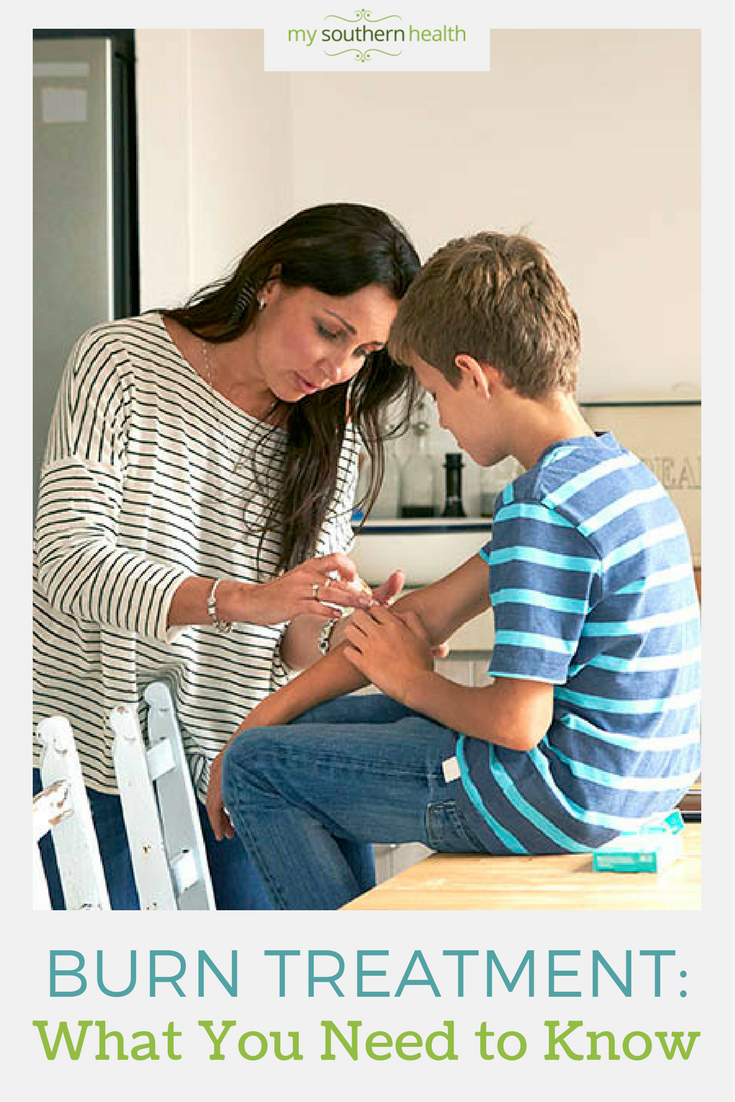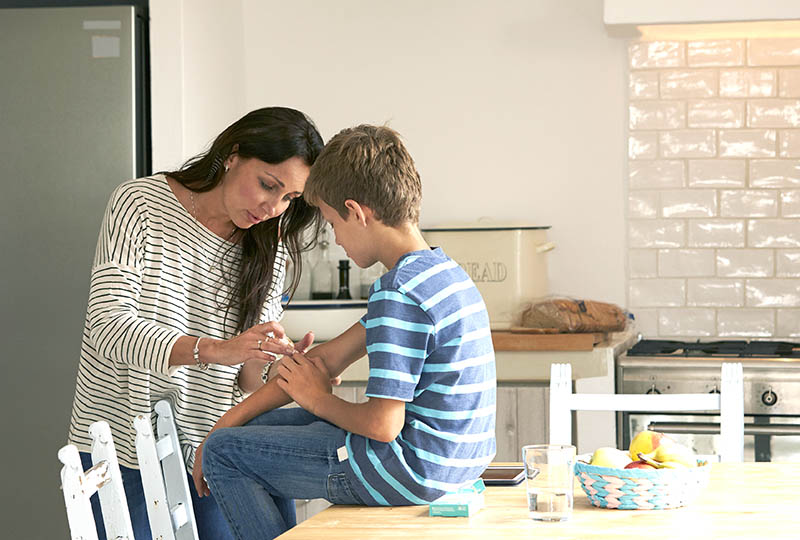Ice and folk remedies like butter are not helpful in burn first-aid. Follow this advice and know when to seek treatment.
Burns can be scary and tricky to assess. Here’s what to keep in mind if you or a loved one are faced with a burn.
Types of burns
A burn is damage to the skin caused by heat, flame, hot liquids or chemicals. There are three types or degrees of burns.
- Superficial or 1st degree burns are damage to the top layer of skin, usually causing redness and pain like a sunburn.
- Partial thickness or 2nd degree burns are damage to the deeper layers of skin, usually causing blisters and pain. The wounds should be pink or red under the blisters.
- Full thickness or 3rd degree burns are damage to the entire thickness of skin, including nerves and blood vessels. The skin may be black (charred), brown or white.
First aid for burns
- Flush the burn area with low-pressure, running cool water.
- Don’t apply ice. It can be too harsh for burned skin and cause tissue damage.
- Folk remedies such as applying butter do not help the healing process and may increase the risk of infection if the burn is severe.
- Cool water (not cold) alone or a very mild soap can be used to gently clean the area.
- Keep the burned area clean and dry as it heals. The area can be covered with a light bandage, if needed. A small amount of an over-the-counter ointment can be applied to keep the bandage from sticking to the skin.
When to go to the hospital for a burn
- A burn covers a large area, especially if blistering occurs.
- There is extreme pain or loss of sensation.
- Burns occur to face, eyes, hands or feet.
- A burn involves chemicals or electricity.
- There is smoke inhalation.
- A burn does not appear to be healing well.
Signs and symptoms of infection
You should check your burn daily for signs and symptoms of infection. Symptoms include:
- Increased redness around the burns (including areas that were not burned).
- Increased pain.
- Foul-smelling drainage.
- Fever.
- Increased swelling.
Source: The Vanderbilt Burn Center


